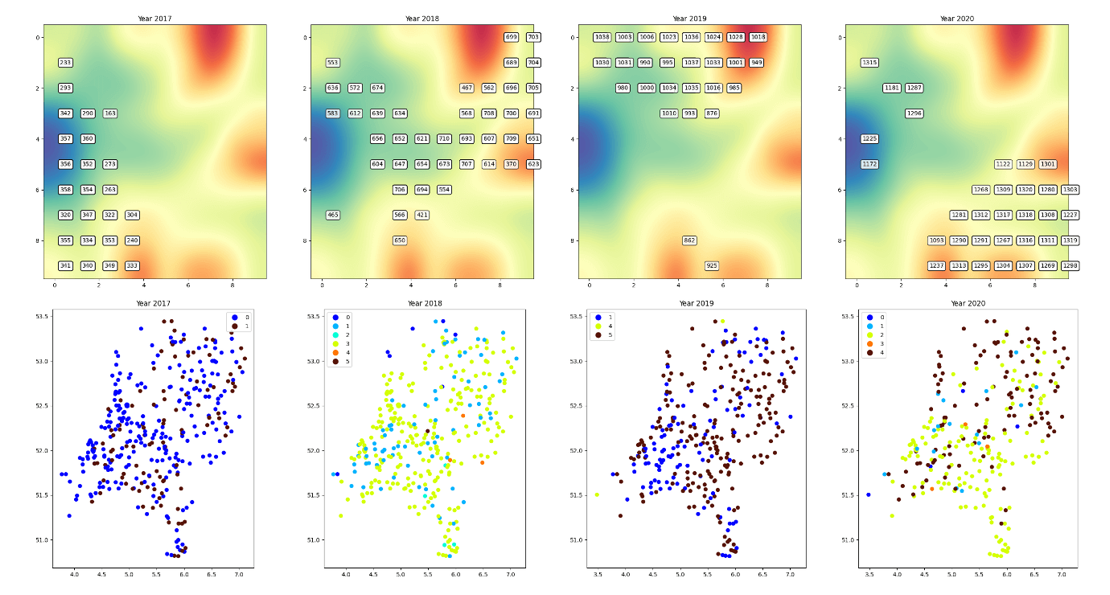Self-Organized Maps (SOM) is an unsupervised neural network algorithm that uncovers hidden patterns and relationships within complex datasets. We applied SOMs in the KAPPA project, which aims at modelling pollen and pollen allergies in the Netherlands, to visualize the spatial relationship between allergy (hay fever) medication sales and pollen emissions. SOM results were mapped to the corresponding geolocation to understand the spatial pattern.
CRIB's Geospatial Computing Platform was utilized in the KAPPA project to develop the research code of the project and as a sharing environment for interactive knowledge sessions. We used the platform to program and collaborate within the internal ITC project team, as all team members can access easily the developed scripts, provide feedback, or get the necessary results to feed project documentation.
 Figure 1. Self Organized Maps of weekly sales (per year) of hay fever medication and the corresponding map.
Figure 1. Self Organized Maps of weekly sales (per year) of hay fever medication and the corresponding map.
We also conducted an interactive workshop with project partners. This workshop aimed to collaboratively explore the spatio-temporal correlation between over-the-counter medication (for allergies) and pollen emission in the Netherlands as captured by SOM (see Figure 1). Our project partners received credentials and access to a dedicated project space in the platform. We also ensured everyone could "play" in the environment using dedicated notebooks. Although our project partners were not familiar with the CRIB platform and Jupyter notebooks, the session was well-received, and users could do additional post-workshop exploration.
The KAPPA project pursues understanding pollen allergies by modelling data from pollen to patients. Several institutions participate in a multidisciplinary project consortium such healthcare specialists, governmental organizations working on health, municipal public health service, business sector and universities. Dr. Ellen-Wien Augustijn is leading the ITC team whereas Dr. Rosa Aguilar is being responsible for the associated geoprocessing component and Prof. Dr. Raul Zurita-Milla contributes with his vast expertise in spatiotemporal analytics.
For more information:
Making the effects of climate change on allergy manageable
https://www.itc.nl/global-impact/geo-health/projects/pollen-allergy/
Large differences in hay fever progression 2021 and 2022
https://www.itc.nl/news/2022/11/250530/large-differences-in-hay-fever-progression-2021-and-2022

